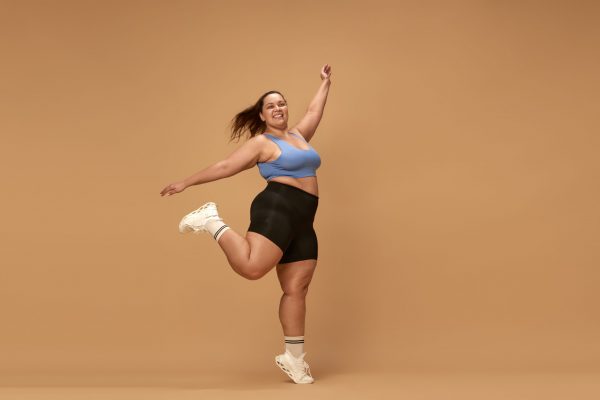Home>Shop by Size>Plus Size Workout Wear>Should You Buy Shorts A Size Bigger? The Sizing Conundrum In The World Of Running Shorts


Plus Size Workout Wear
Should You Buy Shorts A Size Bigger? The Sizing Conundrum In The World Of Running Shorts
Modified: August 8, 2023
Unravel the sizing conundrum in the world of running shorts and discover whether you should buy shorts a size bigger. Gain insights into finding the right balance between a snug fit and room for movement based on your body type and personal preferences.
Navigating the complex world of apparel sizing is always a challenge, and the case is no different when it comes to running shorts. One often asked question is, “Should you buy shorts a size bigger?” This is a legitimate query considering how pivotal the right fit can be to your comfort and performance. In this article, we’ll unravel the mystery surrounding running shorts sizes and delve into the details that will help you make an informed choice.
Understanding The Role of Running Shorts
Before we dive into the intricacies of sizing, it’s essential to comprehend why running shorts are a vital part of your running gear. Designed specifically with running in mind, these shorts offer features that enhance comfort, promote mobility, and improve performance. Running shorts come in various styles and lengths, including:
- Split shorts: These have a high cut on the side, promoting a wider range of movement.
- V-notch shorts: These are similar to split shorts but have a V-shaped notch on the side.
- Half-tights: Extending to mid-thigh, they provide more coverage and muscle support.
- Long tights: These are full-length running pants, suitable for colder climates and those who prefer more coverage.
The Sizing Dilemma: Do You Go A Size Up?
The question of whether to purchase running shorts a size bigger is influenced by multiple factors. Let’s discuss the pros and cons.
The Argument For Bigger Shorts
The primary factor pushing the argument in favor of larger shorts is comfort. Shorts that are a size bigger provide extra room, which could be beneficial during a run. Here are some reasons to consider this option:
- More Room for Comfort: Larger shorts could potentially offer more comfort by reducing chafing and providing better air circulation.
- Personal Preference: If you’re a fan of a looser fit and prioritize comfort over a tight fit, bigger shorts could be your best bet.
- Weight Fluctuations: If your weight tends to fluctuate, going a size up could offer more flexibility.
The Case Against Bigger Shorts
While larger shorts may seem appealing, they come with their own set of drawbacks:
- Potential Performance Impact: Bigger shorts may create extra drag or interfere with your running stride, hampering your performance.
- Risk of Slippage: Shorts that are too big, particularly those with a weak waistband, risk slipping down during a run, causing discomfort and distraction.
- Aesthetic Considerations: Shorts that are too large might not be as visually appealing, with a baggy appearance that could detract from your overall style.
Factors to Consider When Choosing Your Running Shorts Size
Determining whether to go a size up when purchasing your running shorts involves considering several factors:
- Body Type: Depending on your body shape, a size bigger could provide a more comfortable and flattering fit.
- Brand Specifics: Every brand has a unique sizing chart. What is considered large in one brand might be medium in another. Always refer to the brand’s specific size guide.
- Fabric Material: The material of the shorts also plays a role. Shorts made from stretchable fabrics might provide a better fit than non-stretch materials, even without going a size up.
Tips To Choose The Right Running Shorts Size
Here are some actionable tips to help you navigate the perplexing world of running shorts sizes:
- Know Your Measurements: Familiarize yourself with your body measurements. Knowing your waist, hip, and inseam measurements can be a great help when referring to brand-specific size charts.
- Consider The Shorts’ Purpose: The type of running you plan to do can influence the size and style of shorts you should choose. Long-distance runners might prefer longer, fitted shorts to prevent chafing, while sprinters might opt for shorter, looser shorts for maximum freedom of movement.
- Try Before You Buy: Whenever possible, try on the shorts before buying. This allows you to gauge the comfort and fit accurately.
The Bottom Line
In conclusion, the decision to buy running shorts a size bigger depends on a blend of personal preference, comfort, and specific brand sizing. It’s a delicate balancing act between ensuring comfort and preventing any potential compromise on performance. By considering the factors and tips outlined above, you’re now equipped to make an informed decision.
Frequently Asked Questions
What should I consider when buying running shorts?
When buying running shorts, consider the shorts’ material, fit, length, and comfort. Check the brand’s size guide, and if possible, try on the shorts before buying. The right pair of shorts can enhance your performance and make your run more enjoyable.
Is it better to buy running shorts a size bigger?
Buying running shorts a size bigger can provide more comfort and room for movement. However, shorts that are too large may create drag or slip down during a run. It’s crucial to balance comfort with performance.
How should running shorts fit?
Running shorts should fit comfortably around your waist without being too tight. They should provide enough room for movement without causing chafing. The length depends on your personal preference and the type of running you do.
Do running shorts shrink after washing?
The shrinking of running shorts depends on the material they are made from. Synthetic materials like polyester and nylon, commonly used in running shorts, are generally resistant to shrinking. However, it’s always recommended to follow the care instructions provided.
What’s the difference between men’s and women’s running shorts?
The primary difference between men’s and women’s running shorts lies in the cut and fit, designed to suit different body shapes. Men’s running shorts are typically straight-cut and longer, while women’s shorts might have a more contoured fit and shorter inseam.